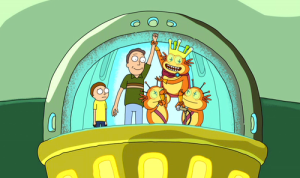You are using an out of date browser. It may not display this or other websites correctly.
You should upgrade or use an alternative browser.
You should upgrade or use an alternative browser.
New pictures of Pluto from NASA
- Thread starter nhlducks35
- Start date
- Status
- Not open for further replies.
User 100115
Banned
Damn that's sexy.
Are those old rivers? Like lava flow? I know it's still active right?
Are those old rivers? Like lava flow? I know it's still active right?
Link
The Autumn Wind
Fixed for justice.Now that is one sexy planet.
EchoChamber
Member
it's still a planet to me.
Walter White Walker
Member

I totally see two eyes, a nose between, and a smiley mouth at the bottom to the center lower left.
Dice//
Banned
Now that is one sexy dwarf planet.
Fixed for justice.

outunderthestars
Banned
I live that we live in a time where we can see clear pictures of Pluto.

I totally see two eyes, a nose between, and a smiley mouth at the bottom to the center lower left.

RatskyWatsky
Hunky Nostradamus
I live that we live in a time where we can see clear pictures of Pluto.
"I like that we live in a time where we can visit Pluto." - someone 500 years from now
cj_iwakura
Member
"I like that we live in a time where we can visit Pluto." - someone 500 years from now
Technically, you could visit it these days (or in a few decades, to be more accurate). It'd be a one-way trip, to be sure, but after that much time with practically nothing but empty space to look at, I'd say most people would be ready to stay.
RatskyWatsky
Hunky Nostradamus
Technically, you could visit it these days (or in a few decades, to be more accurate). It'd be a one-way trip, to be sure, but after that much time with practically nothing but empty space to look at, I'd say most people would be ready to stay.
faster than light travel bro
Square2015
Member
WOW, imagine what it would look like on the surface...
http://www.nasa.gov/feature/new-pluto-images-from-nasa-s-new-horizons-it-s-complicated








This synthetic perspective view of Pluto, based on the latest high-resolution images to be downlinked from NASAs New Horizons spacecraft, shows what you would see if you were approximately 1,100 miles (1,800 kilometers) above Plutos equatorial area, looking northeast over the dark, cratered, informally named Cthulhu Regio toward the bright, smooth, expanse of icy plains informally called Sputnik Planum. The entire expanse of terrain seen in this image is 1,100 miles (1,800 kilometers) across. The images were taken as New Horizons flew past Pluto on July 14, 2015, from a distance of 50,000 miles (80,000 kilometers).
Credits: NASA/Johns Hopkins University Applied Physics Laboratory/Southwest Research Institute
Credits: NASA/Johns Hopkins University Applied Physics Laboratory/Southwest Research Institute

Mosaic of high-resolution images of Pluto, sent back from NASAs New Horizons spacecraft from Sept. 5 to 7, 2015. The image is dominated by the informally-named icy plain Sputnik Planum, the smooth, bright region across the center. This image also features a tremendous variety of other landscapes surrounding Sputnik. The smallest visible features are 0.5 miles (0.8 kilometers) in size, and the mosaic covers a region roughly 1,000 miles (1600 kilometers) wide. The image was taken as New Horizons flew past Pluto on July 14, 2015, from a distance of 50,000 miles (80,000 kilometers).
Credits: NASA/Johns Hopkins University Applied Physics Laboratory/Southwest Research Institute
Credits: NASA/Johns Hopkins University Applied Physics Laboratory/Southwest Research Institute

In the center of this 300-mile (470-kilometer) wide image of Pluto from NASAs New Horizons spacecraft is a large region of jumbled, broken terrain on the northwestern edge of the vast, icy plain informally called Sputnik Planum, to the right. The smallest visible features are 0.5 miles (0.8 kilometers) in size. This image was taken as New Horizons flew past Pluto on July 14, 2015, from a distance of 50,000 miles (80,000 kilometers).

This 220-mile (350-kilometer) wide view of Pluto from NASAs New Horizons spacecraft illustrates the incredible diversity of surface reflectivities and geological landforms on the dwarf planet. The image includes dark, ancient heavily cratered terrain; bright, smooth geologically young terrain; assembled masses of mountains; and an enigmatic field of dark, aligned ridges that resemble dunes; its origin is under debate. The smallest visible features are 0.5 miles (0.8 kilometers) in size. This image was taken as New Horizons flew past Pluto on July 14, 2015, from a distance of 50,000 miles (80,000 kilometers).
Credits: NASA/Johns Hopkins University Applied Physics Laboratory/Southwest Research Institute
Credits: NASA/Johns Hopkins University Applied Physics Laboratory/Southwest Research Institute

This image of Plutos largest moon Charon, taken by NASAs New Horizons spacecraft 10 hours before its closest approach to Pluto on July 14, 2015 from a distance of 290,000 miles (470,000 kilometers), is a recently downlinked, much higher quality version of a Charon image released on July 15. Charon, which is 750 miles (1,200 kilometers) in diameter, displays a surprisingly complex geological history, including tectonic fracturing; relatively smooth, fractured plains in the lower right; several enigmatic mountains surrounded by sunken terrain features on the right side; and heavily cratered regions in the center and upper left portion of the disk. There are also complex reflectivity patterns on Charons surface, including bright and dark crater rays, and the conspicuous dark north polar region at the top of the image. The smallest visible features are 2.9 miles 4.6 kilometers) in size.
Credits: NASA/Johns Hopkins University Applied Physics Laboratory/Southwest Research Institute
Credits: NASA/Johns Hopkins University Applied Physics Laboratory/Southwest Research Institute

This image of Pluto from NASAs New Horizons spacecraft, processed in two different ways, shows how Plutos bright, high-altitude atmospheric haze produces a twilight that softly illuminates the surface before sunrise and after sunset, allowing the sensitive cameras on New Horizons to see details in nighttime regions that would otherwise be invisible. The right-hand version of the image has been greatly brightened to bring out faint details of rugged haze-lit topography beyond Plutos terminator, which is the line separating day and night. The image was taken as New Horizons flew past Pluto on July 14, 2015, from a distance of 50,000 miles (80,000 kilometers).
Credits: NASA/Johns Hopkins University Applied Physics Laboratory/Southwest Research Institute
Credits: NASA/Johns Hopkins University Applied Physics Laboratory/Southwest Research Institute

Two different versions of an image of Plutos haze layers, taken by New Horizons as it looked back at Pluto's dark side nearly 16 hours after close approach, from a distance of 480,000 miles (770,000 kilometers), at a phase angle of 166 degrees. Pluto's north is at the top, and the sun illuminates Pluto from the upper right. These images are much higher quality than the digitally compressed images of Plutos haze downlinked and released shortly after the July 14 encounter, and allow many new details to be seen. The left version has had only minor processing, while the right version has been specially processed to reveal a large number of discrete haze layers in the atmosphere. In the left version, faint surface details on the narrow sunlit crescent are seen through the haze in the upper right of Plutos disk, and subtle parallel streaks in the haze may be crepuscular rays- shadows cast on the haze by topography such as mountain ranges on Pluto, similar to the rays sometimes seen in the sky after the sun sets behind mountains on Earth.
Credits: NASA/Johns Hopkins University Applied Physics Laboratory/Southwest Research Institute
Credits: NASA/Johns Hopkins University Applied Physics Laboratory/Southwest Research Institute
Jason's Ultimatum
Member
faster than light travel bro
set course for pluto's bar and grill warp 10, engage!
IceDoesntHelp
Banned
Look at all that ice.
D
Deleted member 80556
Unconfirmed Member
Man, the reality of space discoveries are always so beyond my imagination. I seriously never imagined that Pluto would look like this. Amazing.
RatskyWatsky
Hunky Nostradamus
wanderingprostheyltite
Member
Amazing. Nasa can have my babies.

I totally see two eyes, a nose between, and a smiley mouth at the bottom to the center lower left.
I ... don't see it? Need red circles
The camera isn't shooting from Earth, it's coming from a probe. It's more crazy to think data is being sent from that far away to Earth, though.Fine, I'll ask: How on earth are we able to take photos (IN THAT QUALITY) of something so far away?
I need an advanced ELI5. ELI26?
My brain ate itself while trying to comprehend.
I ... don't see it? Need red circles
I think he means this, idk.
SwiftDeath
Member
Man that's some next level marketing for the new star wars movies
I can't be the only one who sees a Destroyer right?
Fine, I'll ask: How on earth are we able to take photos (IN THAT QUALITY) of something so far away?
I need an advanced ELI5. ELI26?
My brain ate itself while trying to comprehend.
believe it or not with a playstation one processor lol
aka it's done with a probe that has a decent quality camera, and very low power specs not sure how it talks to earth though, very delayed waves of some sort I imagine.
EroticSushi
Member
It all makes sense now.Man that's some next level marketing for the new star wars movies
I can't be the only one who sees a Destroyer right?
EASTC0AST_GH05T
Member
looks cool.
It's transmitting via radio at 125 bytes a second. They have an 8 hour a day reception window, assuming they can get the antenna time, and each photo takes about 45 minutes to send.believe it or not with a playstation one processor lol
aka it's done with a probe that has a decent quality camera, and very low power specs not sure how it talks to earth though, very delayed waves of some sort I imagine.
The LORRI camera is monochromatic, unfortunately. But, they have another instrument called the Ralph telescope, which has a color CCD imager, so they can take color from the Ralph and use it for LORRI images. Like so:anyone know if color data will be coming at some point? I know black and white gets priority due to bandwidth but it would be amazing to see this in real color.
http://www.space.com/30039-incredib...ortrait-created-from-multiple-pics-video.html

I think he means this, idk.
That certainly isn't it.
I see it, but am on phone. Under the black toupee, there's an eye on the left and right and slightly smiling, smirking mouth below.
Nice picture.
Why are all planets spherical? Why can't they be different shapes like in Super Mario Galaxy? Something to do with their rotation?
Gravity makes them spherical. Really small moons like Hydra isn't a sphere because of it's weak gravity.
triplestation
Member
Its a very spooky feeling looking at something thats supposed to be so far away
Its still out there just floating
Bravo mankind
Its still out there just floating
Bravo mankind
hurricanes
Member
Why are all planets spherical? Why can't they be different shapes like in Super Mario Galaxy? Something to do with their rotation?
Gravity
Edit: Beaten.
Why are all planets spherical? Why can't they be different shapes like in Super Mario Galaxy? Something to do with their rotation?
The spinning motion actually makes planets less spherical and more oblong. Gravity during the formation of the planets when they were more malleable, flattened things out on the surface. Look up videos of astronauts playing with water in orbit like on the ISS. You can see the smaller water droplets forming spheres as they coalesce due to their own gravity and surface tension.
- Status
- Not open for further replies.




